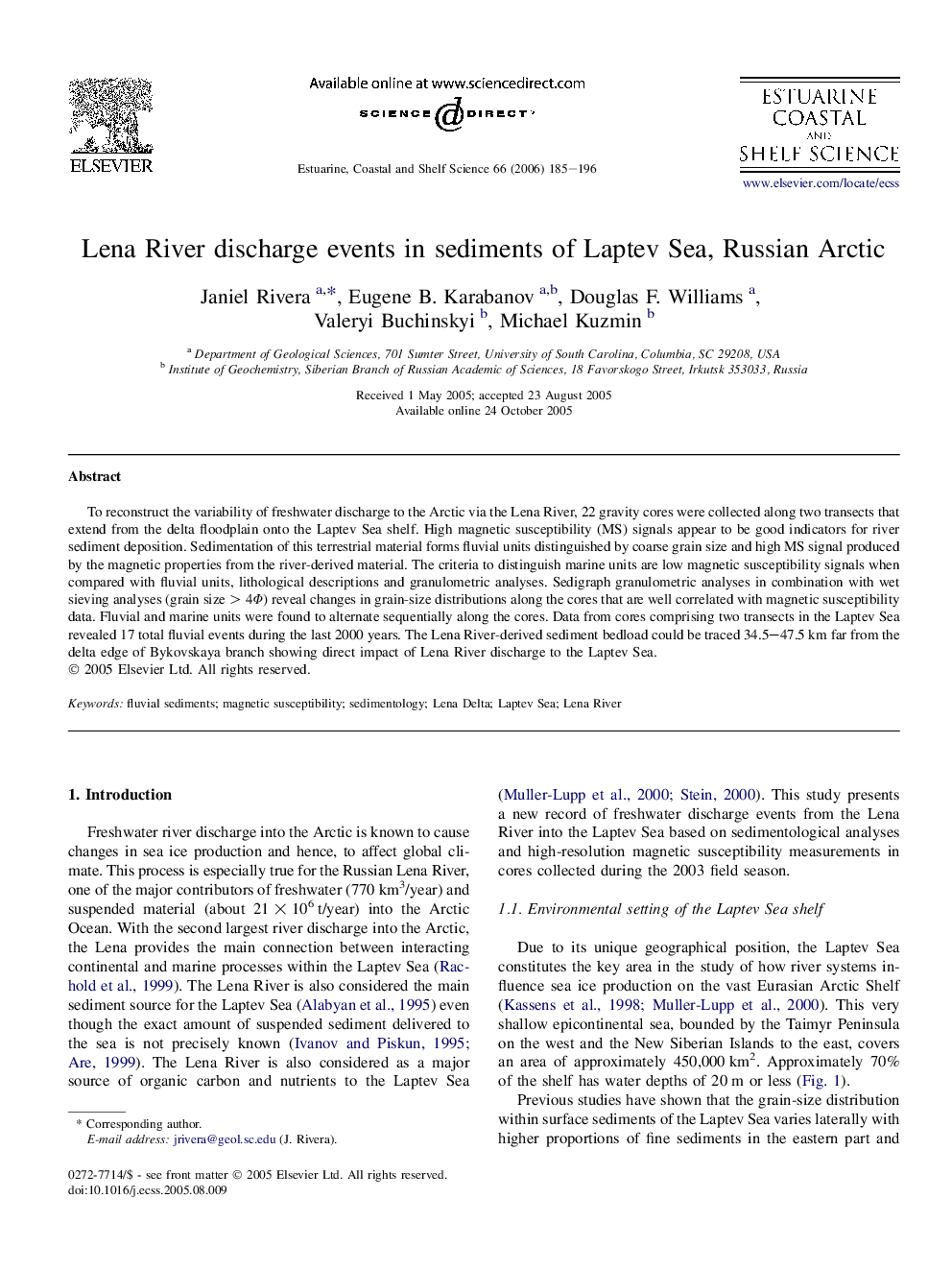| Article ID | Journal | Published Year | Pages | File Type |
|---|---|---|---|---|
| 4542572 | Estuarine, Coastal and Shelf Science | 2006 | 12 Pages |
To reconstruct the variability of freshwater discharge to the Arctic via the Lena River, 22 gravity cores were collected along two transects that extend from the delta floodplain onto the Laptev Sea shelf. High magnetic susceptibility (MS) signals appear to be good indicators for river sediment deposition. Sedimentation of this terrestrial material forms fluvial units distinguished by coarse grain size and high MS signal produced by the magnetic properties from the river-derived material. The criteria to distinguish marine units are low magnetic susceptibility signals when compared with fluvial units, lithological descriptions and granulometric analyses. Sedigraph granulometric analyses in combination with wet sieving analyses (grain size > 4Φ) reveal changes in grain-size distributions along the cores that are well correlated with magnetic susceptibility data. Fluvial and marine units were found to alternate sequentially along the cores. Data from cores comprising two transects in the Laptev Sea revealed 17 total fluvial events during the last 2000 years. The Lena River-derived sediment bedload could be traced 34.5–47.5 km far from the delta edge of Bykovskaya branch showing direct impact of Lena River discharge to the Laptev Sea.
